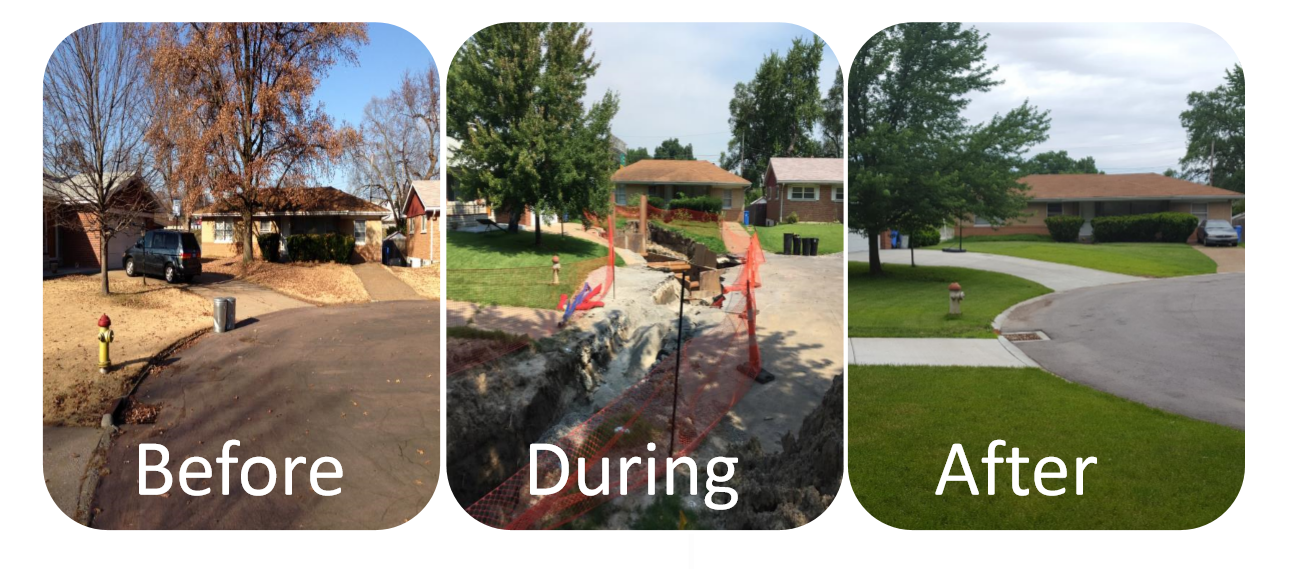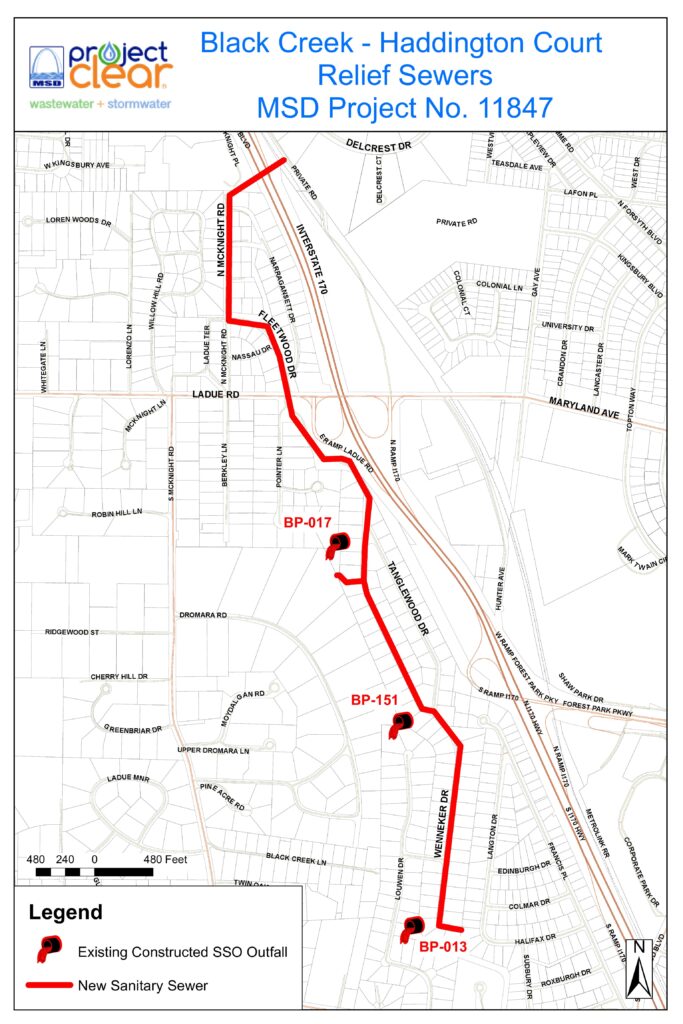Black Creek - Haddington Court Relief Sewers (11847)
As part of a long-term effort to reduce basement backups and sewer overflows, MSD Project Clear is constructing a project to replace approximately 7,920 feet of undersized wastewater sewers in the cities of Ladue, Clayton and University City.
Public Meeting - April 24, 2025
Public Meeting - October 4, 2023
Public Meeting - December 16, 2020
Project Map
What is the goal of this project?
MSD Project Clear is investing approximately $17.6 million to improve the wastewater sewers in the cities of Ladue, Clayton and University City. The goal is to reduce basement backups and sewer overflows, which occur when the sewers become overloaded during intense rainfall. This project will allow MSD to eliminate 3 constructed overflow points.
Project Facts
- Construction is estimated to begin in Fall 2023
- MSD Project Clear will replace approximately 7,920 feet of wastewater pipe.
- The pipe size will increase to between 8 and 42-inches in diameter allowing a larger amount of wastewater to flow through the system.
How will it be built?
Some of this project will be constructed by digging through the surface, a process known as “open-cut.” The contractor will dig a trench several feet into the ground, remove the old sewer pipe, and replace it with a newer, larger pipe.
What can residents expect?

This project will be constructed by digging through the surface of the ground in a process known as “open-cut” construction. The pictures above depict what a neighborhood will look like before, during and after a typical open-cut project. In some areas, the contractor will use tunneling to avoid major traffic implications. With any type of construction, residents can expect to see and hear heavy equipment during the sewer excavation process.
Traffic and Access: As much of the construction will take place in paved areas, MSD anticipates traffic disruptions for “through traffic”. Drivers will experience temporary lane closures as construction crosses roadways and will see increased construction traffic. Traffic control will be provided as needed.
The contractor will follow all local ordinances and will notify all properties of any temporary access restrictions. As the majority of construction will take place in backyards, MSD anticipates minimal property access restrictions. The contractor will give all property owners ample notification prior to any access restrictions.
Restoration: After all new sewer pipes are installed, the contractor will restore the construction site according to all MSD and local requirements. This could include sodding any disturbed areas, replacing disturbed pavement, reinstalling fences, etc.
At least one MSD Inspector will be on-site part of the day for every day the contractor is working.
What is the timeline?
This is the current tentative project schedule. This is subject to change based on a variety of factors, including weather.
- Estimated construction start: Fall 2023
- Estimated construction duration: 3 years
FAQs
While MSD’s contractor is connecting a home’s lateral to the new wastewater sewer, they may ask residents to limit water use. In general, this process can take between two to five hours, depending on the complexity of the connection. The contractor will notify property owners in advance.
MSD does not anticipate other utility services being disrupted during this project. We will work with Missouri One Call to locate utilities before beginning construction. Occasionally, the contractor may run into utilities that were not located by Missouri One Call which could result in temporary utility disruptions. If this happens, MSD will work with the utility to restore service as quickly as possible.
Trees may need to be removed to construct parts of this project. If there are good options to avoid removing trees, MSD will make every attempt to do that. Property owners with trees that will need to be removed that are not located in already existing easements will have been compensated for the removal through the easement acquisition process.
In general, District policy is to restore affected areas to the same or better conditions than before the project. Streets that are disturbed through this project will be replaced and repaved with similar material. The project’s restoration will meet all local and District requirements.
During easement acquisition, an MSD Right of Way Agent will work with property owners to discuss restoration on their property. Most yard areas will be resodded with the same material. Driveways, walkways, and other hard surfaces will be restored using the same materials that are currently in place. In wooded ground areas, District policy is to seed the disturbed areas.
During active construction, some property owners may experience driveway access restrictions for a short period of time. The contractor will notify property owners in advance of any temporary access restrictions to allow them time to move their vehicles. The contractor will also fill trenches with gravel or place steel plates over trenches during non-working hours so residents can use their driveways during those times.
MSD will instruct its contractor to keep the site reasonably clean and clear of debris. MSD will have an inspector on site every day during active construction. Prior to the start of construction, MSD will give every resident and property owner along the construction site the inspector’s contact information. Community members are encouraged to bring any concerns to the on-site inspector or any other member of the project team.
Stay Informed
Vali Jo Hansen
MSD Project Manager
vhansen@stlmsd.com
314-335-2160
Cary Duchene
Black & Veatch
duchenecr@bv.com
636-536-5854


